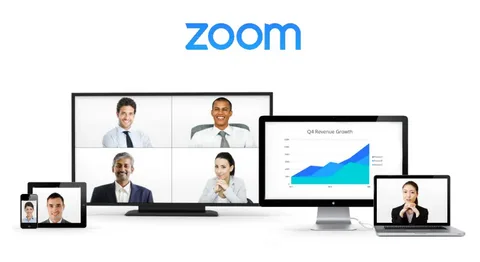ADHD Treatment Success Rates: What the Research Really Says About Virtual Therapy & Medication Management

Telehealth and digital tools have reshaped ADHD care over the last decade. From video visits with specialists to app-based cognitive training and remote medication management, more people are asking: Do virtual approaches actually work for ADHD — and how well?
This article summarizes the best available evidence in 2024–2025, explains what the data means for real patients, and gives practical guidance for choosing safe, effective online ADHD treatment. I’ll highlight randomized trials, meta-analyses, large observational studies, and real-world program evaluations so you get a clear, evidence-based picture.
What “success” means for ADHD care
Before we look at numbers, it helps to define success. In ADHD research, success commonly refers to:
-
measurable symptom reduction on standardized scales (inattention, hyperactivity/impulsivity)
-
functional improvements (school/work performance, relationships)
-
sustained adherence to treatment and long-term outcomes (reduced accidents, improved mental-health markers)
Both behavioral/psychosocial interventions and medication aim to improve symptoms and functioning. Virtual care must be judged across those domains.
Does virtual ADHD therapy reduce symptoms? — The RCT and meta-analysis evidence
A growing evidence base shows that structured online interventions — including therapist-led tele-CBT, parent-training delivered remotely, and some digital therapeutics — produce statistically and clinically meaningful improvements in ADHD symptoms versus waitlist or usual care in randomized trials. A 2022 meta-analysis of online interventions found a moderate effect on attention and social functioning across adults and children, indicating that remote behavioral programs can reduce core ADHD symptoms.
Larger, more recent systematic reviews of digital interventions (2023–2024) show consistent, though sometimes modest, benefits for attention and executive-function outcomes, especially when interventions are structured, guided by clinicians, and combined with caregiver or teacher involvement for children. These reviews indicate replicable short-term improvements; longer-term maintenance data are still limited but emerging.
Bottom line: For many patients, evidence-based psychosocial programs delivered remotely can reduce ADHD symptoms and improve function — especially when the intervention is interactive, structured, and clinician-guided.
How effective is telepsychiatry medication management?
Medication remains one of the most effective treatments for reducing core ADHD symptoms in both children and adults. Telepsychiatry — remote psychiatric evaluation plus medication management — has been shown to deliver safe and effective pharmacotherapy in multiple program evaluations. The Clinical and Telehealth Tele-psychiatry trials (for example, the CATTS model) demonstrated that telepsychiatry models can successfully deliver stimulant medication management with fidelity to evidence-based protocols and good symptom outcomes.
Real-world, large-system analyses (covering millions of visits) have not found evidence that telehealth alone drove widespread inappropriate stimulant prescribing during the pandemic; prescribing trends were more complex and often similar between telehealth and in-person contexts. Those findings suggest well-run telepsychiatry programs can safely provide medication without necessarily increasing misuse at scale.
Digital therapeutics and objective monitoring — new tools with promising results
The field of digital therapeutics (software delivered as treatment) and objective performance tests (like QbTest/QBCheck) is advancing rapidly. Randomized and controlled studies of game-based or attention-training digital products have shown improvements in attention metrics and— in some cases — real-world function; a 2024 clinical study of a novel digital therapy reported measurable gains in pediatric attention outcomes. Regulatory milestones (FDA clearances) for certain digital ADHD tools have reinforced the idea that properly validated software can play a meaningful role alongside therapy and medication.
Objective monitoring tools for medication response are also being evaluated. Early evidence suggests these tools can help clinicians tailor dosing and provide objective evidence of treatment response, though large-scale trials linking objective monitoring to long-term patient outcomes are still forthcoming.
Bottom line: Digital therapeutics and objective tests are promising complements to traditional care — particularly when integrated into clinician-led programs.
Safety signals and population-level outcomes
An important question is whether easier access via telehealth increases risk of overprescribing or downstream harms. Large observational and register-based studies provide reassurance: where broad health-system data have been analyzed, telehealth did not uniformly increase inappropriate stimulant prescriptions, and in some national analyses online adhd treatment medication has been associated with reductions in dangerous outcomes (injuries, transport accidents, suicidal behaviors) when used appropriately. Still, stewardship (PMP checks, documentation, follow-up) matters — especially for controlled medications.
Bottom line: Proper clinical governance (careful assessment, PMP checks, regular monitoring) is crucial; when present, telehealth models do not inherently worsen safety outcomes and may improve access to beneficial medication.
So — how successful is “online adhd treatment” in real-world terms?
If we translate the research into real-world expectations:
-
Short-term symptom reduction: Many clinician-guided online programs and telepsychiatry medication plans deliver moderate-to-large symptom reductions comparable to in-person care in controlled trials. (Evidence: RCTs and meta-analyses.)
-
Functional gains: Improvements in school/work function are reported, particularly when behavioral programs involve caregivers or workplace coaching.
-
Sustained outcomes: Long-term maintenance evidence is growing but still less robust; hybrid models and ongoing monitoring enhance durability.
-
Access and adherence: Telehealth increases appointment adherence, shortening wait times and improving continuity — which often translates to better outcomes in routine care.
Choosing a reputable online ADHD program — practical checklist
When evaluating an online adhd treatment provider, prioritize:
-
Licensed clinicians (psychiatrists, PMHNPs, psychologists) who conduct comprehensive assessments, not just automated quizzes.
-
Structured assessment — standardized rating scales, collateral history (parents/teachers/employers), and objective measures when available.
-
Clear medication protocols — PMP checks, close follow-up, and documented baseline safety screening.
-
Integration of psychosocial care — CBT, coaching, or parent training alongside medication.
-
Measurement-based care — regular symptom scales (ASRS, Conners, clinician-rated tools) to monitor response.
-
Transparent pricing and insurance billing.
Using that checklist increases the odds you’ll get the benefits shown in the published literature.
Future directions: what to watch
-
More RCTs of digital therapeutics and long-term comparative studies that directly measure functional outcomes.
-
Objective monitoring adoption (QbTest/QBCheck) to guide individualized medication management.
-
Policy and prescribing guidance that balance access and safety for stimulant management via telehealth.
Practical takeaway
Evidence indicates that high-quality online adhd treatment — combining clinician-guided behavioral programs, validated digital therapeutics, and careful telepsychiatry medication management — can achieve success rates comparable to in-person care for many patients. Outcomes improve further when programs use objective measures, ensure frequent follow-up, and coordinate with schools or workplaces. Telehealth has expanded access and adherence, but safe prescribing practices and robust clinician oversight are essential to maintain positive population-level outcomes.
If you’re considering virtual care, use the checklist above and choose a program that emphasizes assessment rigor and ongoing monitoring. Done well, online adhd treatment delivers real, measurable benefits — and in many cases, it’s the most practical way for people to get timely, evidence-based care.




